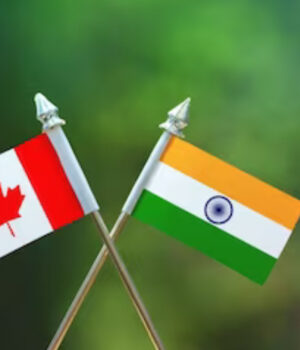On several instances, the Canadian visa application process appeared to be lenient and accommodating, potentially granting entry to individuals who were subjects of investigations and likely to face legal action from Indian agencies. These revelations come from authoritative government sources who further assert that Canadian diplomats became embroiled in the farmers’ protest in India.
The intricacies of the diplomatic relationship between Canada and India have come under scrutiny due to recent developments, including the killing of Khalistani terrorist Hardeep Singh Nijjar. These contentious matters have led to a measured response from the Indian government, including the removal of Canadian diplomats stationed in India.
The decision to remove Canadian diplomats was not taken lightly; instead, it followed extensive deliberation and a careful evaluation of evidence presented by Indian intelligence agencies. This move was rooted in a commitment to maintaining the integrity of national security and to address concerns regarding individuals who had potentially exploited the visa system.
One of the key issues that have come to the forefront is the perceived leniency in the Canadian visa application process. Allegations suggest that this leniency was not only a matter of oversight but a deliberate strategy to facilitate the entry of certain individuals, even if they were under investigation or had legal proceedings pending in India. This created a contentious situation, as it raised questions about whether Canada was inadvertently providing a safe haven for individuals facing legal actions in their home country.
Moreover, the involvement of Canadian diplomats in the farmers’ agitation in India has also contributed to the diplomatic tension. It is suggested that their participation in domestic Indian affairs, particularly during the farmers’ protests, raised concerns about the interference of foreign representatives in the internal matters of the host country. This, in turn, added to the diplomatic complexities between the two nations.
Hardeep Singh Nijjar’s killing further exacerbated the already strained relations between Canada and India. Nijjar was a known Khalistani terrorist, and his presence on Canadian soil and the subsequent developments following his death have ignited a diplomatic firestorm.
In response to these multifaceted challenges, the Indian government took the decision to expel Canadian diplomats stationed in India. This step was not taken hastily but rather after a thorough examination of the available evidence and a measured response to the situation on the ground. It underscores the commitment of the Indian government to safeguard national security and maintain the sovereignty of its legal processes.
The fallout between Canada and India underscores the complexity of diplomatic relations in an increasingly interconnected world. It serves as a reminder of the need for robust visa application processes and international cooperation to address concerns related to potential misuse of these systems. Ultimately, both nations face the challenge of restoring diplomatic equilibrium in the wake of these turbulent events, while upholding their respective national interests and security priorities.










